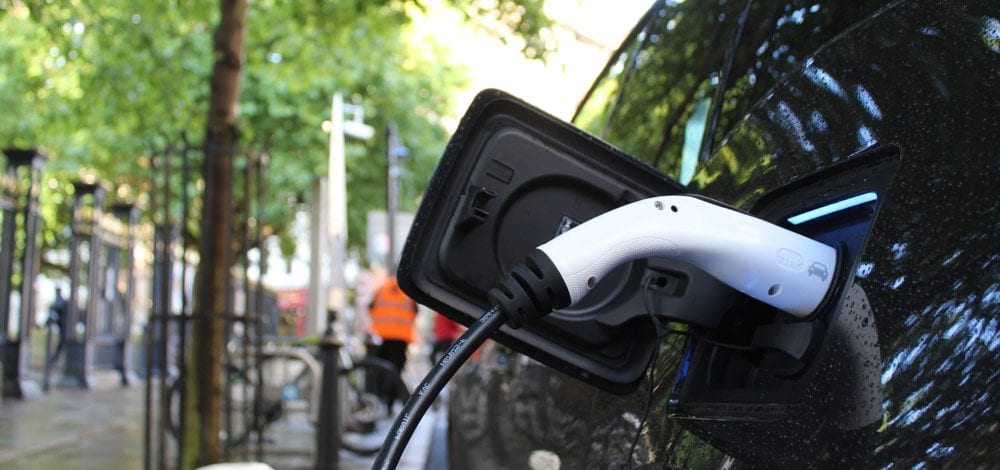For decades, the global energy sector has been in a state of flux, but the direction in which investment is surging has become increasingly clear; electrification, the switchover to renewable energy, and accelerating innovation in clean energy technologies.
Sustainability – given the trans-national imperative to curb climate change – is the overriding force propelling the trends discussed in this review of the energy sector. While fossil fuels will be consumed for decades to come. But crucially, the economic tide is turning in favor of sustainability and low-carbon energy. Waves of renewable energy are swelling in the wake of the oil and coal super-tankers that have fueled development since the industrial revolution.
After years of public subsidy and support for alternatives to fossil fuels, renewables producers are scaling up, their technologies are improving, and costs of production are falling. It is this bottom line that will power the accelerating transition of energy systems in both developed and developing countries.
The future looks renewable
Established wind and solar energy providers have already begun providing cheaper energy than fossil fuel power stations. Within a few years, the investment case will tilt decisively as new-build wind and solar farms become cost-competitive with the incumbent power plants in many countries. The world’s electricity system will move from two-thirds of fossil fuels in 2018 to two-thirds zero-carbon energy by 2050, according to New Energy Outlook. Of the $13.3trn to be invested in new power generation over these coming three decades, 77% will go into renewables.
That global prediction agglomerates a multitude of local trends and varying speeds of transition in different territories. Coal will continue growing in Asia – notably China, India, and Southeast Asia – beyond this fuel’s global peak in 2026. Cheap natural gas will drive coal out of the energy mix in the US, as global gas generating capacity doubles by 2050. In the UK, the coal-to-gas conversion will also accelerate its phase-out ahead of the official 2030 target, before the offshore and onshore wind, and solar, backed up by batteries, dominate the electricity market – rising from two-thirds to some 87% in the two decades to 2050. The transformation of energy systems goes furthest and fastest in Europe.
“By 2040 renewables makeup 90% of the electricity mix in Europe, with wind and solar accounting for 80%,”
New Energy Outlook
Sustainability is not just about the energy source
Other powerful forces are also at work, shaping energy markets and determining how we power our industries, heat our buildings, and fuel our vehicles.
- Rising demand: Both economic and population growth are energy-hungry. Global energy demand picked up in 2017 to 2.2% from its 10-year average of 1.7% as OECD economies grew more quickly. Yet the developing world accounted for nearly 80% of the extra energy consumed. Cheap coal and oil, where it’s available, will continue to fuel these countries’ growth unless and until they get favorable access to the West’s clean energy technologies.
- Investing in efficiency: Energy efficiency will continue to be a major focus of investment and innovation. Since the 1970s, the International Energy Agency estimates that 11 of its member states had saved 1.4bn tonnes of oil, worth $743bn. Annual investment worldwide in all kinds of efficiency measures exceeds $220bn and is growing.
- Decoupling energy and growth: The hope is that reducing the energy intensity of economies can more than offset the demand from growing populations and rising income levels. The shift in consumption from goods to services, which are less energy-intensive, is a major factor.
- Digitalization: Digitalization and smart technologies can also help streamline energy use. Corporate investment in new energy technology companies is growing strongly, reaching $6bn, its highest level ever, in 2017. More generally, smart meters and grids, connectivity through the Internet of Things, and other digital solutions need to contribute.
- Electrifying speed: The shift to electric vehicles will accelerate the electrification of energy systems.
In the UK, charging the road fleet will consume almost a quarter of all electricity used by 2050. Cooling and heating buildings will also contribute to a doubling of global electricity demand by 2050. For only the second year running, the electricity sector attracted more investment in 2017 than oil and gas.
However, if even the most optimistic predictions for decarbonizing the energy system are achieved, along with de-intensifying demand, all this may not be enough. Carbon emissions from energy are expected to peak in the mid-2020s before beginning to take a downward trajectory. The continuing build-up in the lingering concerns about the intermittent nature of renewable energy may soon be blown away as investment in storage technologies surges. Worldwide, energy storage capacity will multiply exponentially by 2040 to more than 1,200GW on the back of an investment of more than $660bn, according to BNEF estimates.
Further falls in the cost of lithium-ion batteries will be a major factor; 2010-2018 saw an 85% reduction. A further halving in the cost per kilowatt-hour is predicted by 2030, driven by demand for electric vehicles as well as stationary storage.
Ten countries lead the way. South Korea will cede its top spot to China and the US, while in Europe, France and Germany outpace the UK. But even here, with more than 300 companies active in the sector, planning applications indicate battery storage capacity will soar. From just 2MW in 2012, applications (normally approved the first time) were made for a total of 6,874MW in 2018. This would be enough to power nearly half a million electric vehicles. Government support for more technically challenging large-scale inter-seasonal storage projects, along with trials involving low-carbon heating, can provide further impetus.
Stabilizing the grid
Multinational energy business Centrica has delivered battery storage projects in Europe including the 49MW Roosecote battery in Cumbria, one of the continent’s largest. It also partnered with battery supplier Tesla and the Belgian Transmission System Operator to deliver a pioneering multi-asset ‘virtual power plant’ to stabilize the European power grid. Its energy distribution business, Centrica Business Solutions, is now teaming up with the US Department of Energy’s National Renewable Energy Laboratory on a trial to explore the integration of multiple energy storage technologies, including second-life batteries from electric vehicles.
A 100MW battery farm said to form the world’s largest lithium-ion battery, went live in South Australia at the end of 2017. Tesla’s installation, covering 10,000 square meters, takes power from a nearby wind farm and connects to the national grid. The storage was commissioned after a state-wide blackout in 2016. Tesla claims its Powerpacks saved nearly $40m in the first year and stabilized the region’s unreliable grid. In summer 2019 Tesla followed up with a new Megapack solution with 60% higher energy density. It claims a system of Megapacks is more cost-effective as well as faster to install than a fossil-fuel plant.
Home energy storage
Millions of homes will have batteries too. A solar battery boom has taken hold in Germany and is set to accelerate across Italy and Spain. Energy consultancy Wood MacKenzie predicts that Europe’s home battery capacity could climb fivefold in the next five years as more households plug rooftop solar panels into battery packs. By 2024, more than 500MW would be installed, the equivalent of building a new gas-fired power plant every year. A lag is expected in the UK, however, due to a recent VAT increase on solar battery packs and other unfavorable policies, despite a government pledge of £264m to develop battery technology.
Lithium is leading but not the only rider in the storage stampede. The array of technologies being tapped ranges from solid-state and flow batteries, via mechanical flywheels and compressed air energy, to thermal and pumped hydro-power.
Overcoming the challenges of renewables
A Swiss start-up also uses a gravity-based system, which lifts 35 ton composite bricks to the top of purpose-built towers when power from wind and solar is abundant. Lowering the weight releases the stored power when required by the grid. In August 2019, Japan’s SoftBank Vision Fund put $110m into Energy Vault, which claims it will ensure that renewables are cheaper than fossil fuel power at any hour of day or night.
The International Energy Agency believes that hydrogen produced using energy from solar and wind can create regional powerhouses. Hydrogen and hydrogen-based fuels could transport energy from renewables over long distances – from regions with abundant solar and wind resources, such as Australia or Latin America, to energy-hungry cities thousands of kilometers away.
The expansion of storage is fundamental to the transition underway in the power system, and also transportation. As the proportion of variable generation in the electricity system rises, so does the need for storage to balance the grid. Batteries can take the place of natural gas ‘peaker’ power plants. So not only will batteries be used instead to manage this dynamic supply and demand, sector experts predict that energy storage will become a viable alternative to building new electricity generation capacity or network reinforcement.
For more trends in energy, download your copy of “Reduce, Reuse, Store, and Recycle” here:












No Comments